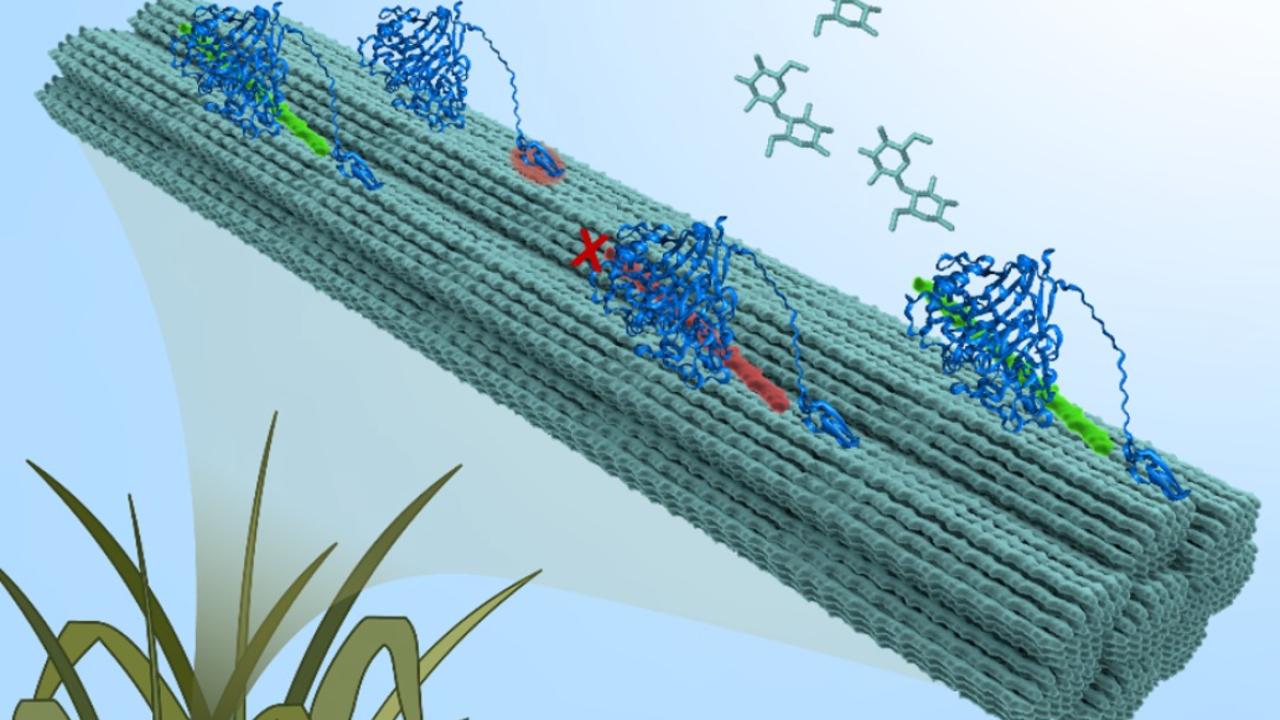
Research Sheds Light on Using Agriculture Residues for Fuels, Chemicals
Unlocking Renewable and Sustainable Sugars Key to Circular Bioeconomy
Research led by University of California, Davis, sheds new light on how to access the sugars locked up in plant materials to convert byproducts into new feedstocks to produce fuels, materials and chemicals.
Converting grasses, weeds, wood and other plant residues into sustainable products normally produced using petroleum products will be key to achieving carbon neutrality.
“We want to utilize plant residues and there is a lot of plant waste out there,” said Tina Jeoh, a professor of biological and agricultural engineering at UC Davis.
The research, published in the journal Green Chemistry, will help lower the technological barrier and make it easier for the sustainable conversion of plant material, including agricultural byproducts, Jeoh said.
Jeoh used a spectromicroscopy tool at Lawrence Berkeley National Laboratory to measure enzyme reactions in real time to changes in the environment. The technology allows for simultaneous imaging and chemical analysis.
Unlocking sugars
Biocatalysts, which accelerate chemical reactions, need sugars for certain conversions, such as fermentation. Cheap, renewable and sustainable sugars that don’t compete with food demands are key to that transformation.
“These sugars are key to establishing a bioeconomy built on cycling renewable carbon for biofuel, biochemical and biomaterial alternatives to fossil fuel sourced versions,” Jeoh said.
Finding a better way to unlock sugars could advance the technology used in sustainable production operations.
“The emerging biomanufacturing industry is developing new catalysts to make compounds that will replace fossil fuels,” Jeoh said. “Most of these are based in fermentation technology and there’s still this question of ‘Where does the sugar come from?’ How are enzymes interacting at the surface of the plant residues to efficiently break bonds to release sugars?”
The technology at the Berkeley Lab, which was funded through a U.S. Department of Energy program, allows researchers to analyze infrared wavelengths and characterize biochemical processes in both place and time.
“It actually really confirmed a lot of what we thought we were seeing, which is very exciting,” Jeoh said.
Next up for Jeoh is to explore how the enzymes work to release sugars from the plant residues at nearly the molecular level.
Jennifer Danger Nill, who graduated from Jeoh’s lab in 2019 and now works at the biotechnology firm Amyris, contributed to the research, as did scientists at Lawrence Berkeley National Laboratory and Lawrence Livermore National Laboratory.
The work was supported through several Department of Energy grants.
Media Resources
- Tina Jeoh, Department of Biological and Agricultural Engineering, tjeoh@ucdavis.edu
- Emily C. Dooley, College of Agricultural and Environmental Sciences, 530-650-6807, ecdooley@ucdavis.edu